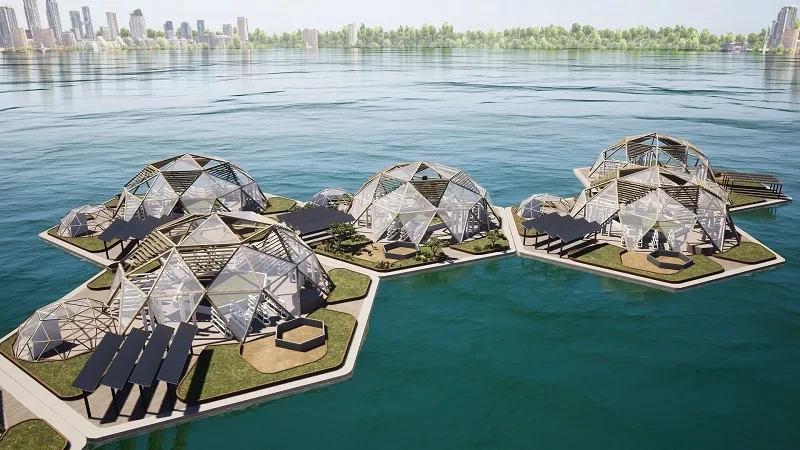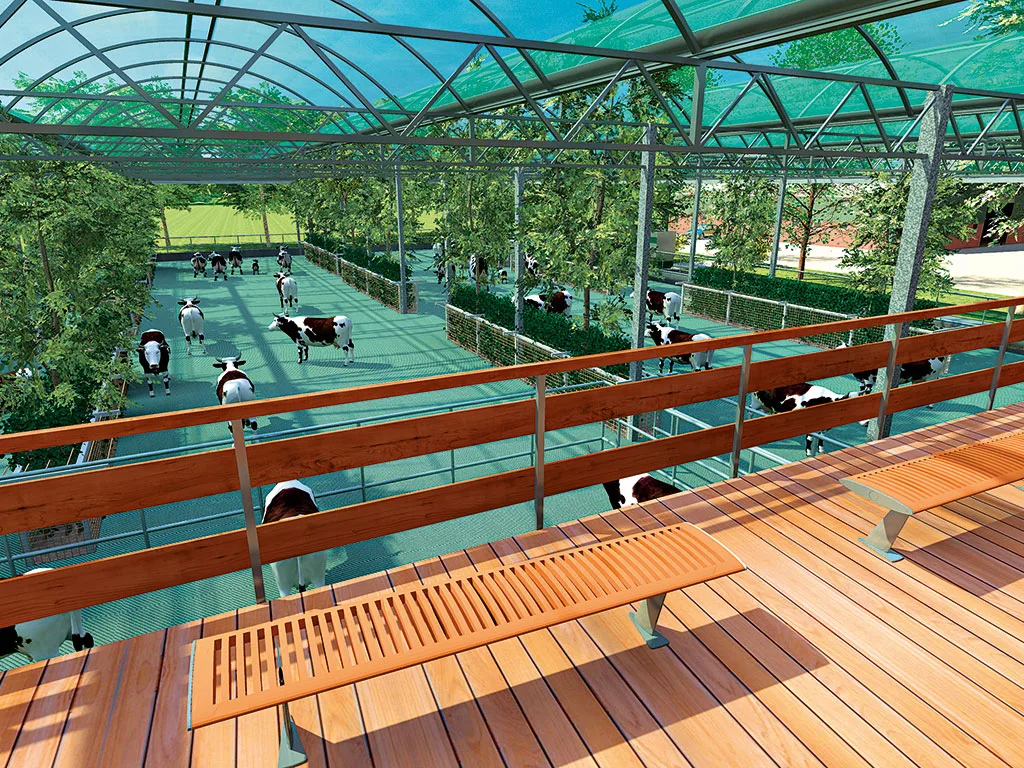Floating Farms Technology Review

As urban populations grow and climate change impacts traditional farming, innovative solutions like floating farms have emerged to address food security challenges. Floating farms represent a significant advancement in sustainable agriculture, leveraging water bodies to grow crops and raise livestock. This technology not only conserves land but also integrates renewable energy and efficient water use to maximize productivity.
What is Floating Farm Technology and When Did It Appear?
Floating farm technology is a form of agriculture that utilizes aquatic platforms to cultivate crops and rear animals. This concept dates back to ancient practices in regions like Southeast Asia, where floating gardens were common. However, modern floating farms are much more sophisticated, incorporating hydroponics, aquaponics, and renewable energy sources. The idea gained traction in the early 2000s, with significant developments over the past decade due to advances in engineering and sustainable practices.
Contemporary floating farms are equipped with solar panels, wind turbines, and advanced irrigation systems. These floating platforms are typically anchored to the seabed or designed to move with the tides, ensuring stability and optimal growing conditions. The integration of technology has transformed these farms from simple floating gardens to complex, efficient agricultural systems.
How Does It Work and What Problems Is It Intended to Solve?
Floating farms operate using a combination of hydroponics and aquaponics systems. Hydroponics involves growing plants in nutrient-rich water without soil, while aquaponics combines hydroponics with aquaculture, where fish waste provides organic nutrients for the plants. These systems recycle water and nutrients, significantly reducing the need for freshwater and chemical fertilizers.
The primary problems floating farms address include land scarcity, climate resilience, and food security. As urban areas expand, arable land becomes limited. Floating farms offer a solution by utilizing water surfaces. Additionally, they are less susceptible to climate-related issues such as droughts and floods, providing a stable food production environment. This technology also aims to reduce the carbon footprint of agriculture by integrating renewable energy sources and minimizing transportation needs through localized production.
Where Is It Already Used?
Floating farms are already being implemented in various parts of the world. In the Netherlands, the Floating Farm Rotterdam is an innovative dairy farm that produces milk and cheese using sustainable practices. The farm features robotic milking systems, solar panels, and waste recycling, showcasing the potential of floating farms in urban settings.
In Asia, countries like Bangladesh and Vietnam have embraced floating agriculture to combat flooding. These regions have developed floating gardens, known as “baira,” which allow farmers to grow crops on water during the rainy season. These traditional methods have been modernized with hydroponic systems, enhancing productivity and resilience.
Furthermore, Singapore, with its limited land resources, has explored floating farm solutions to increase local food production. Projects like the floating fish farms in the Johor Strait demonstrate how aquaculture can thrive in urban coastal environments, contributing to the nation’s food self-sufficiency goals.
How Effective Is It?
Floating farms have proven to be highly effective in several aspects. Firstly, they maximize space utilization by converting water surfaces into productive agricultural land. This is particularly beneficial for densely populated urban areas with limited land availability. Secondly, the integration of renewable energy sources like solar and wind power reduces operational costs and environmental impact, making these farms more sustainable.
Moreover, the closed-loop systems used in hydroponics and aquaponics minimize water usage and eliminate the need for chemical fertilizers, promoting eco-friendly farming practices. Studies have shown that floating farms can achieve higher yields compared to traditional soil-based agriculture due to the controlled growing conditions and efficient resource use.
Additionally, floating farms enhance food security by providing a consistent and reliable food supply, especially in regions vulnerable to climate change. By mitigating the effects of natural disasters and adapting to changing environmental conditions, these farms ensure a stable food production system.
Overall, the effectiveness of floating farms lies in their ability to combine sustainability, efficiency, and resilience, making them a viable solution for future food production challenges.

Where Else Can It Be Used?
Floating farms have the potential to be utilized in various other contexts beyond urban and coastal areas. For instance, they can be deployed in inland water bodies like lakes and reservoirs, where they can contribute to local food production and support rural economies. These farms can also be integrated into existing aquaculture operations, enhancing productivity and sustainability.
Moreover, floating farms can play a crucial role in disaster-stricken areas where traditional agriculture is not feasible. In regions affected by floods, hurricanes, or tsunamis, floating farms can provide immediate and scalable solutions for food production, aiding in disaster recovery and resilience building.
Additionally, they can be adapted for use in industrial and mining regions where soil contamination is a concern. By utilizing water surfaces for agriculture, floating farms can bypass soil quality issues and offer a clean and sustainable alternative for food production.
Is This Our Promising Future or Temporary Hype?
Floating farms represent a promising future for sustainable agriculture, addressing critical challenges such as land scarcity, climate resilience, and food security. The increasing adoption of this technology worldwide indicates its potential to transform agricultural practices and support global food systems.
However, the success of floating farms depends on continued innovation and investment. Advancements in materials, engineering, and renewable energy integration are essential to enhance the efficiency and scalability of these systems. Governments and private sectors must collaborate to create supportive policies and funding mechanisms to drive the growth of floating farms.
While some may view floating farms as a temporary trend, their practical benefits and growing implementation suggest otherwise. As the global population continues to rise and climate change impacts intensify, floating farms offer a resilient and adaptable solution for future food production, making them a key component of sustainable agricultural development.
